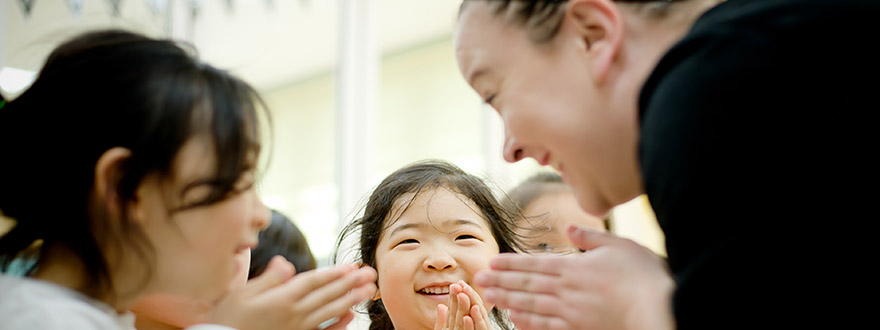Cognitive
The way a child learns, acquires knowledge, and interacts with his surrounding environment characterizes cognitive development. Helen Doron Kindergartens understands that young children are inquisitive learners. With a play-based, hands-on learning environment and curriculum, our teachers encourage children to explore their boundaries and expand their horizons.
Understanding Cognitive Development
Two-year-old’s learning processes are thoughtful. Their grasp of language is increasing, and they are beginning to form mental images for things, actions, and concepts. He also can solve some problems in his head, performing mental trial-and-error instead of having to manipulate objects physically. And as his memory and intellectual abilities develop, he’ll begin to understand simple time concepts, such as “You can play after you finish eating.”
Two-year-olds are starting to understand the relationship between objects. For instance, he’ll be able to match similar shapes when you give him shape sorting toys and simple jigsaw puzzles. Play is also becoming more complex. Most noticeably, he’ll start stringing together different activities to create a logical sequence.
Three-year-olds and some young four-year-olds are considered pre-operational thinkers, which means that they rely solely on the concrete appearance of objects rather than ideas, they focus on only one relationship at a time, and they often see things from only one point of view—their own (Piaget, 1969).
Three-year-olds have good memories for things in their immediate experiences. However, they have not developed effective strategies for recalling information over longer periods of time. Therefore, structure and routines are important in three-year-olds’ lives. This allows them to anticipate and predict what they will be doing and what is expected of them.
Four- and five-year-olds experience important changes in cognitive growth. In general, four- and five-year-olds are beginning to problem solve, think about cause-and-effect relationships, and express these ideas to others. As four- and five-year-olds’ cognition matures, they begin to make the distinction between private thoughts and public expressions.
Four-year-olds are actively manipulating their environment and constructing meaning from their world. At this age, children are very egocentric in their thinking. Egocentrism is the tendency to be more aware of their own point of view than that of others (Piaget, 1952). Four-year-olds’ thinking and reasoning are concrete, and they typically reason from the particular to the particular as opposed to the particular to the general. (Siegler, 1997).
Concept development is another important aspect of the cognitive development of four-year-olds. They are organizing information into concepts (e.g., chair or animal) based on attributes that define an object or an idea. (Gelman, 1999).
Four-year-olds are developing their memory skills. They can, with some prompting, remember what they did last weekend. At four, children are also beginning to develop a sense about what is real and what is not. This is called the appearance/reality distinction (Flavell, 1992).
Five-year-olds think about things. Lee watches the leaves fall off the trees and says that the leaves look like they are dancing. Then he asks, “Why do the leaves fall off the trees?” Five-year-olds are filled with questions about how things work, how things are made, and where things come from. Although five-year-olds are egocentric in their thinking, they are beginning to be aware of others’ feelings and points of view (Siegler, 1997). At this age, children can begin to understand that they can be happy when others are not and begin to accept that others do not have to play the exact game that they are playing.
Five-year-olds become more sophisticated in their development and organization of concepts. With things that children are very familiar with, they can begin to see how different objects fit into different categories. Five-year-olds are interested in sorting and grouping (Flavell, Miller, & Miller, 1992). They can successfully sort objects on the basis of a single feature, such as color, shape, and size.
Linguistic Scientist, educator and founder of the Helen Doron Method explains the ideal age to learn English as a mother-tongue language.


